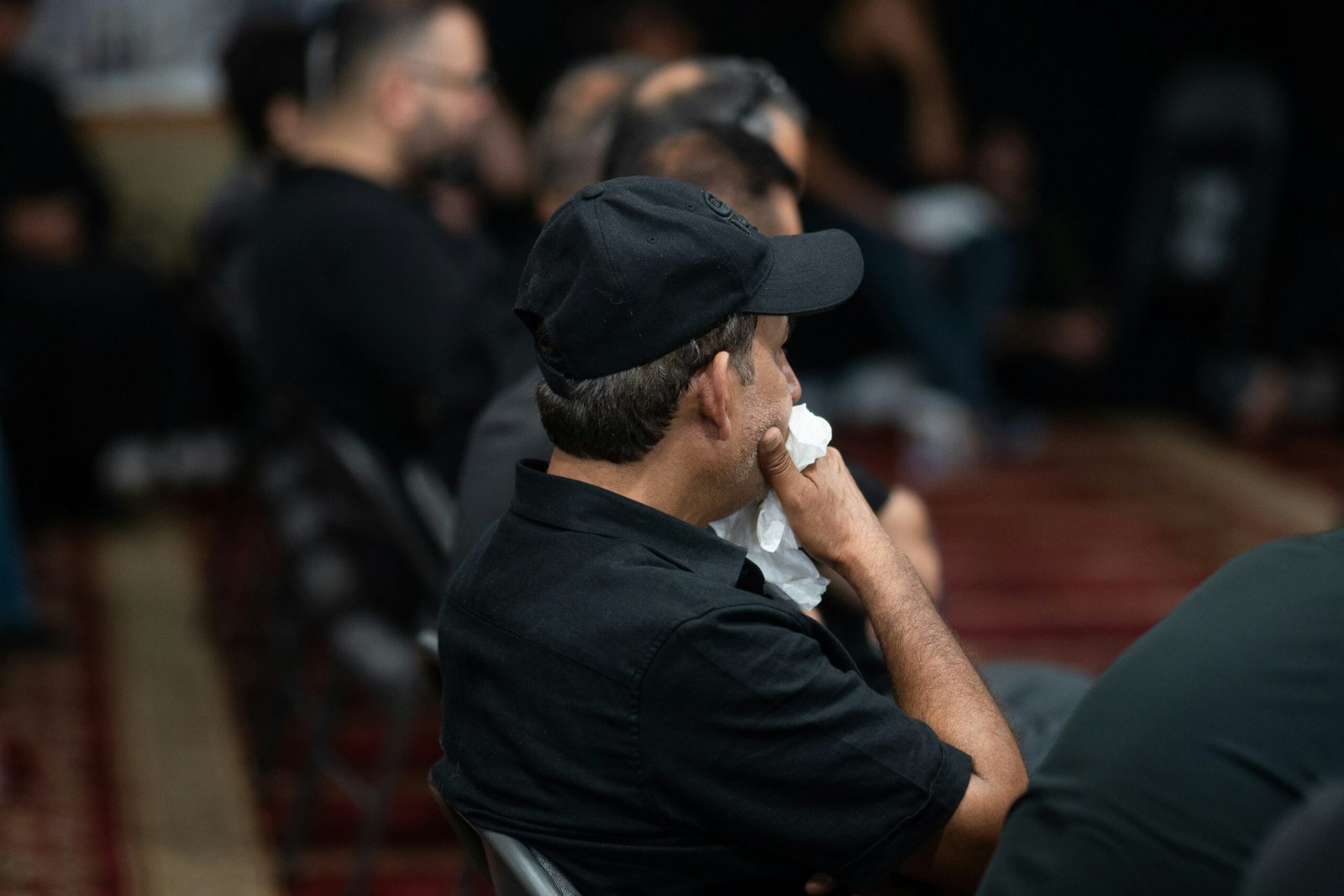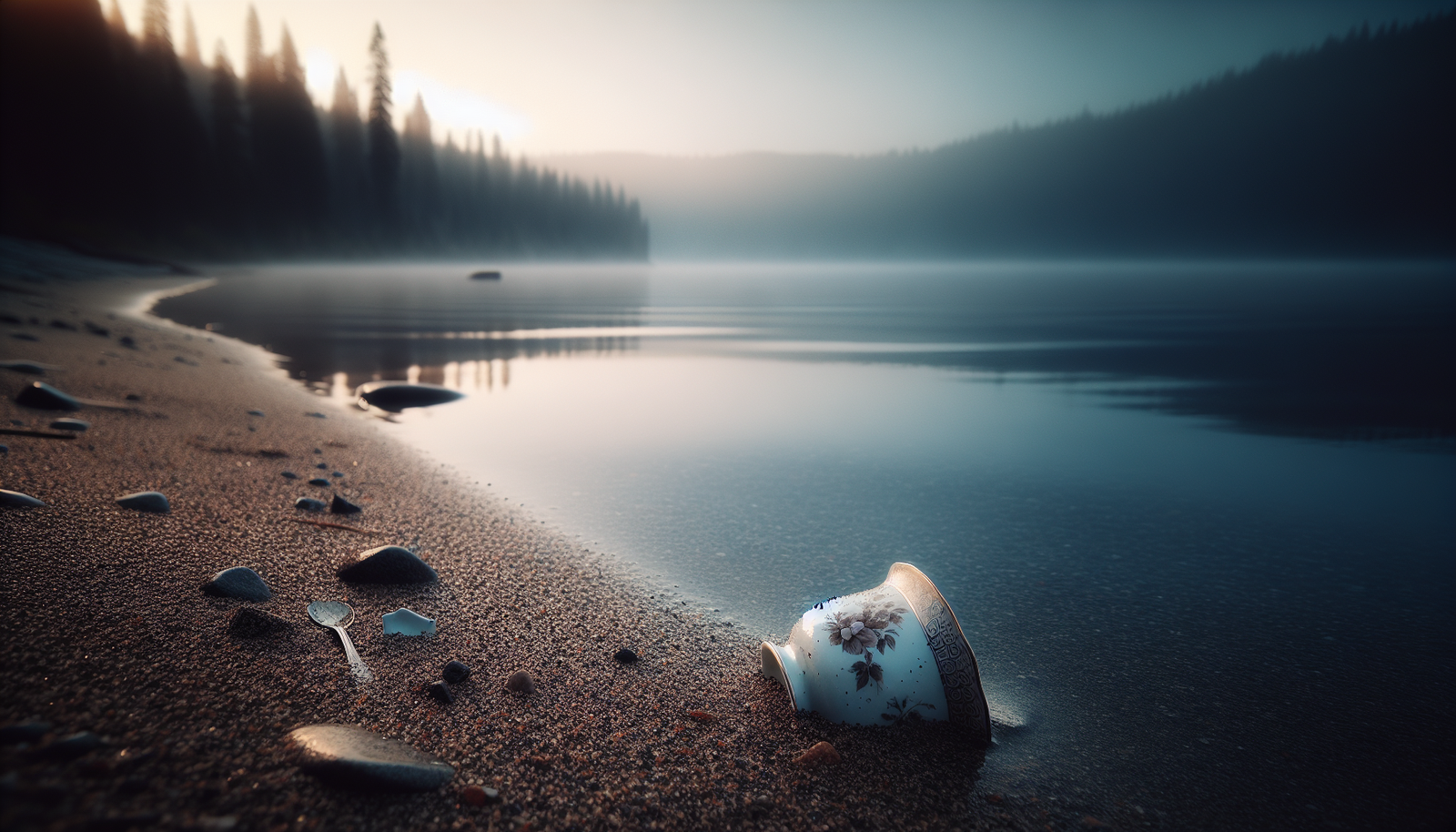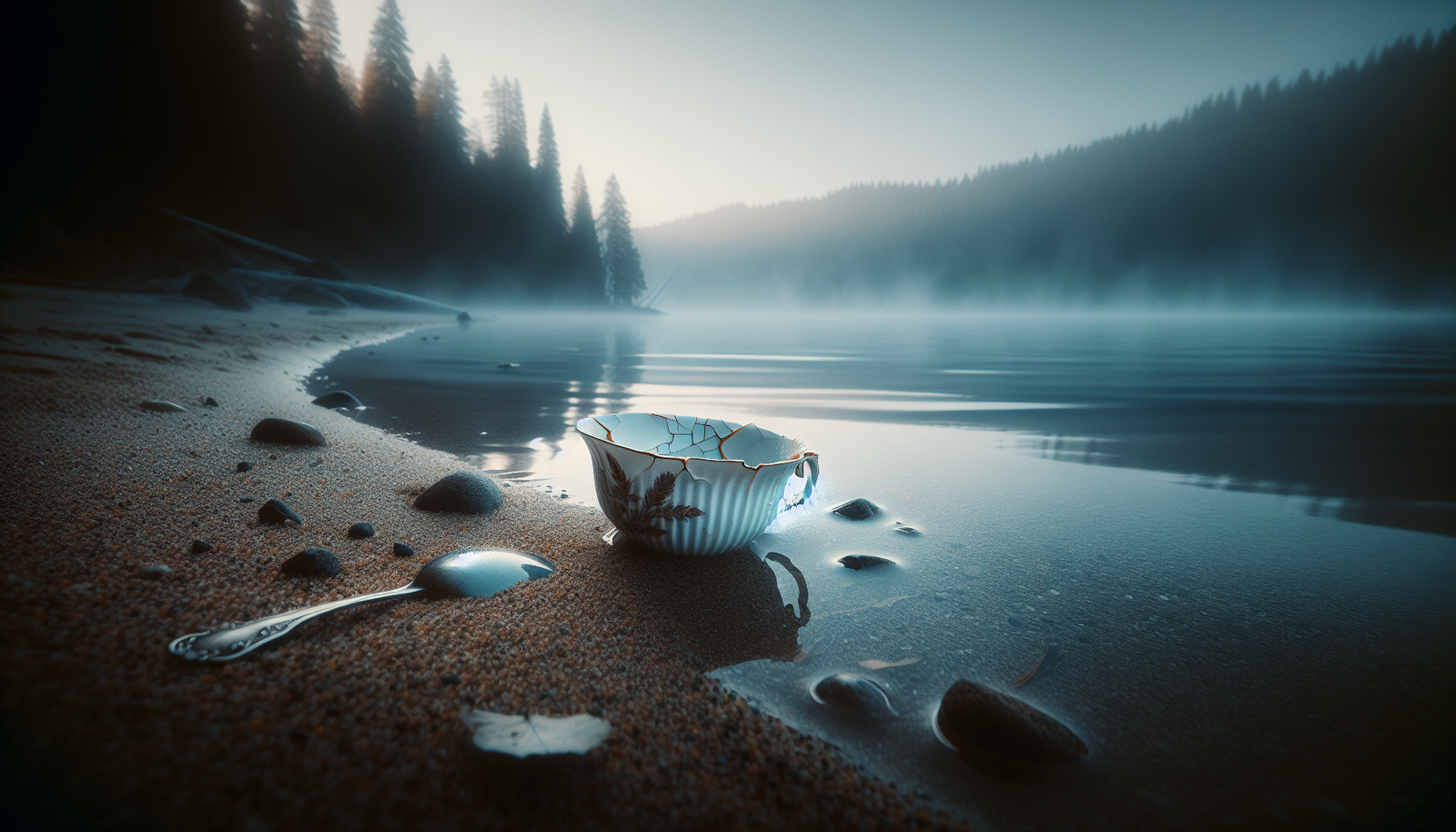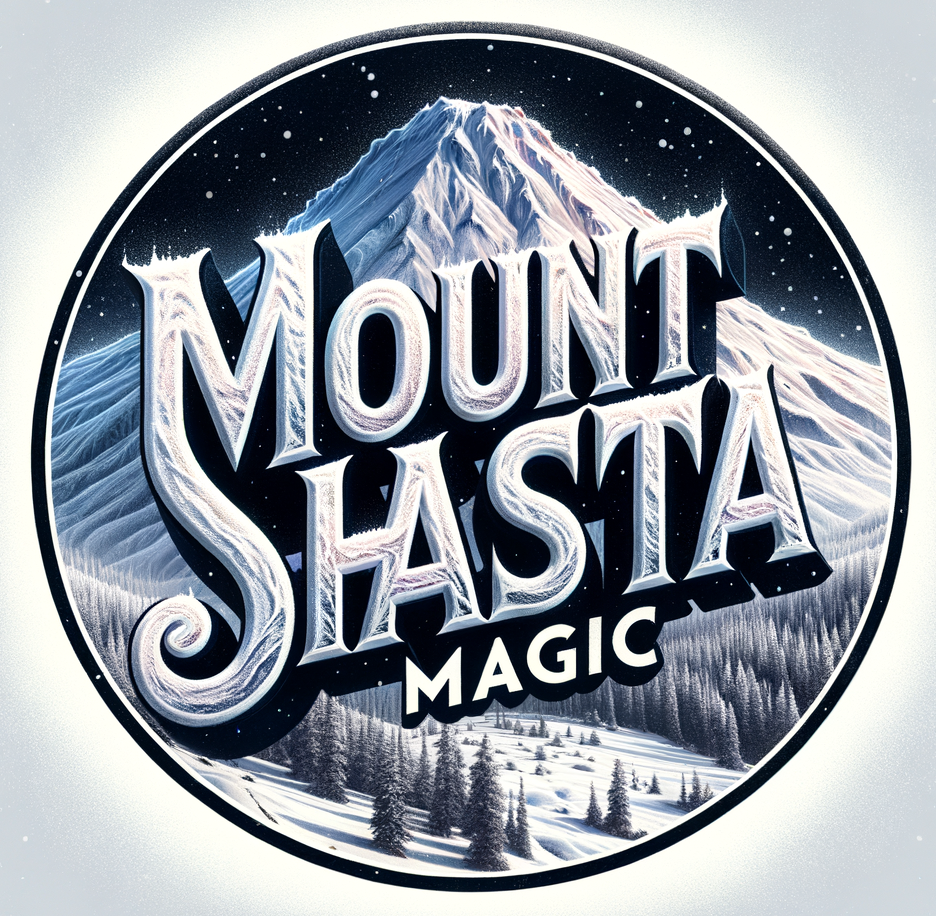Have you ever driven up to a pristine mountain lake expecting a pastoral postcard and ended up feeling like a supporting character in a tragicomedy you didn’t audition for?
Lake Siskiyou and the Small Domestic Tragedies I Brought to the Shore
This is a story about Lake Siskiyou, Mount Shasta, and the small disasters you insist on packing along with your sunscreen. You imagine quiet mornings, birdsong, and a puckish reflection of the mountain in the water. Instead, you bring a casserole that insists it is a bomb, a paddleboard that believes air is optional, and a sense of decorum that promptly abandons you on the second day.
A Place That Pretends to Be Simple
Lake Siskiyou presents itself as uncomplicated: a clear body of water circling a small island, framed by Ponderosa pines and the uncompromising bulk of Mount Shasta. You arrive with a plan to unwind, but the lake is honest; it does what it has always done. It reflects, it receives, and it has a habit of revealing the parts of you that are hard to fit into a suitcase.

This image is property of images.unsplash.com.
Why Lake Siskiyou Matters
Lake Siskiyou is not only scenic; it’s a community focal point, offering outdoor recreation, private hassle, and the occasional moment of public humiliation you’ll retell at dinner parties for years. If you like compact lakes with dramatic backdrops and a strong sense of place, this will feel like a well-written short story. If you bring fragile expectations, it will become a personal essay.
The Lake in Context: Where You Are When You’re There
Lake Siskiyou sits just northwest of the town of Mount Shasta in northern California. It’s a reservoir formed by damming the Sacramento River tributaries long enough ago to encourage trees to grow along its banks. When you stand on its shore and look east, Mount Shasta dominates the horizon, offering a dramatic, sometimes menacing shoulder to your selfie.
Basic Facts You Should Know
A few practicalities will aid your illusions. The lake’s elevation is over 3,200 feet, so mornings can be crisp even in summer. The looping Lake Siskiyou Trail gives you a manageable hike with great views. Boating, fishing, and picnicking are permitted in designated areas, and there’s a small island—Ruby Island—that’s popular for short swims and contemplative kneeling.

This image is property of images.unsplash.com.
The Surrounding Setting: Mount Shasta’s Presence
Mount Shasta isn’t background scenery; it’s a character. The mountain affects weather, mood, and your belief that fried food will taste better when eaten with a volcanic silhouette in the background. Locals might be casual about the peak; you will be reverential, as if you’ve been invited to a shrine and brought snacks.
A Little History to Impress Your Friends
Mount Shasta has long been significant to native peoples and later to settlers and spiritual seekers. The lake itself, smaller than many reservoirs you might know, became a recreational hub in the 20th century. You do not need to memorize the dates, but knowing that the area has long been a place of solace will make you sound informed when someone asks why you chose it.
Getting There: Logistics You’ll Want to Plan For
You reach Lake Siskiyou most commonly by driving. The nearest sizable towns are Mount Shasta and Dunsmuir, both of which have services but not the convenience of a metropolitan area. Cell service can be spotty in places—an important note for the person who expects GPS to hold their hand.
When to Visit
Summer (June–September) is the busiest and warmest, with water temperatures that invite poor decisions like skinny-dipping at dawn. Spring and fall offer cool, reflective days and fewer tourists. Winter (if you’re romantic or stubborn) brings snow and some closed facilities. You must balance crowds, weather, and your tolerance for cold coffee.

This image is property of images.unsplash.com.
What You’ll Do There: Activities and Their Dangers
Lake Siskiyou is a place for low-stakes physicality: paddleboarding, kayaking, gentle boating, fishing, hiking, and sitting until your butt goes numb. Each activity gives you opportunities both for joy and for the small catastrophes that will form the spine of your narrative.
Boating and Paddling
You’ll see kayaks, small motorboats, and paddleboards. Paddling on calm water is blissful until wind or poor judgment intervenes. Bring life jackets. You will be tempted to treat the lake like a bathtub; resist the urge to leave the shore with anything less than a plan and a functioning paddle.
Swimming and the Water’s Mood
The water is lovely in summer but can be surprisingly cold in the mornings. You’ll survive indignity if you hop in too early; you will not survive your pride if you flop back onto shore looking like a drowned rat and insist you meant to do a dramatic entrance.
Hiking and Short Walks
The Lake Siskiyou Trail circles the lake and gives steady views. Gray Butte and surrounding trails offer more challenge and, if you’re lucky, a quiet spot to sit and send a long, smug text to friends about how “refreshed” you feel.
Camping, Lodging, and Where to Sleep When You Bring Too Much
Options range from campgrounds and RV sites to small cabins and local inns. If you’re the sort of person who likes to bring your kitchen sink, an RV site or a cabin will suit you. If you’re traveling light, tent camping beside the lake can feel restorative—until your neighbor decides to practice saxophone at midnight.
Comparing Places: A Helpful Table
| Accommodation Type | Pros | Cons |
|---|---|---|
| Tent Camping | Closest to nature; inexpensive | Weather exposure; noisy neighbors possible |
| RV Sites | Comfortable; kitchen and bathroom | Less scenic; generator noise |
| Cabins/Lodges | Warm, private, intentional | More expensive; limited availability |
| Nearby Inns (Mount Shasta) | Services and dining close | Not lakefront; drives required |
Choose based on how much you value solitude versus a hot shower with good water pressure.

Food and the Shore: Culinary Ambitions vs. Reality
You arrive with recipes, intentions, and a casserole dish you swore would be the highlight of the trip. When you cook outdoors, you trade control for atmosphere. Flames are smaller than they look in the instruction booklet; aluminum foil has a mischievous way of becoming part of the sand. You will misjudge quantities, forget a can opener, and learn the hard way that seagulls have culinary opinions.
The Charm of Picnicking
Picnics feel wholesome. You sit on a blanket and eat food out of Tupperware, which makes you feel modern and grounded. You will discover later that the Tupperware lid is missing and a neighbor has it under their bench with a polite note that reads, “Your rubberized container is meant to contain food, not the entire history of spoons.”
Wildlife and Safety: Animals Are Real Participants
The area supports diverse wildlife—birds, deer, raccoons, and occasionally bears. You’ll enjoy glimpses of animals if you keep your distance and your food sealed. You might become a documentary director at 6 a.m. when a raccoon stages an elaborate heist of your unattended bag of marshmallows.
Practical Safety Notes
Bears are real; so are coyotes. Keep food stored properly and follow campground guidance. If you see a bear, remain calm and feel self-conscious about all the times you proclaimed to be “ready for anything.”

Weather and Seasonal Considerations
Mountain weather changes like moods at a family dinner. Mornings can be crisp and clear; afternoons may bring surprise thunderstorms. Spring might offer rain; autumn has brilliant colors. You should pack layers, waterproof footwear, and patience.
Seasonal Table: What to Expect
| Season | Temperature Range | What to Expect |
|---|---|---|
| Spring | 30–60°F (0–15°C) | Cool mornings, possible rain |
| Summer | 50–85°F (10–30°C) | Warm days, busy weekends |
| Fall | 35–65°F (2–18°C) | Crisp weather, fewer crowds |
| Winter | 20–45°F (-6–7°C) | Snow, limited services |
Plan outfits like you’re preparing for six slightly different personalities.
The People You’ll Meet: Locals, Tourists, and the In-Between
There’s a blend of long-time locals who’ve been coming to the lake for decades and transient visitors who treat the place like a seasonal wardrobe change. Conversations range from fishing tips to earnest spiritual chatter about Mount Shasta’s energy field. You will alternate between feeling like an ignorant tourist and an overinformed enthusiast.
Social Tips for Decent Behavior
Be polite, clean up after yourself, and try not to apologize too much for small domestic errors—though an honest apology for borrowing someone’s dock without asking will go a long way.
The Small Domestic Tragedies You Bring to the Shore
This is the section where your trip’s true output becomes clear: a litany of minor disasters that, in retrospect, fit together like a patchwork quilt you’ll never admit was ever hideous.
The Inflatable Paddleboard That Refused Commitment
You will, in a moment of optimism, purchase or rent an inflatable paddleboard that seems to mean well. You inflate it in the parking lot, feeling proud, and push off with the confidence of a person who has watched three videos. Halfway across the lake, you hear a small, accusatory hiss. A slow leak turns your vessel into an existential question: can a person who once owned a blow-up flamingo survive being adrift on a lake with nothing but chipped sunscreen to keep them company? You will find the shore by flailing, not by skill.
The Casserole That Became a Cultural Artifact
You bring a casserole because casseroles announce that you are both civilized and committed to communal dining. You set it on a picnic table and within minutes, a seagull robs it with the coordination of an accomplished thief. When you finally retrieve what remains, you discover that the foil has fused to the edges and the celery has transformed into an unidentifiable green sadness. You will serve it anyway, and people will eat it for reasons you will never entirely understand.
The Tent That Thought It Was a Sail
The tent you bought on a whim promised easy setup and storm-proofing. It is, instead, capricious. When the wind arrives at 2 a.m., your tent takes flight for a brief, terrifying moment before you wrestle it back down like a reluctant flag. You will spend the morning apologizing to new acquaintances for your resemblance to a small, embarrassed circus.
The Marquee Fire That Retained Its Dignity
You light a camp stove to make coffee and, between the gusts and the old can of fuel, it produces an impressive flare-up that sears a black halo around your eyebrows. You stand very still for a few minutes because you have read that panic looks worse on camera. Later, as you drink coffee that tastes faintly of burnt dignity, you will discover that the marshmallows can be remade into something edible.
The Keys That Vanished into the Lake
At some point, you will perform a ritual in which you jingle your keys to ensure they are present and functional—then, by way of an elegant pivot, you will launch into a water-bound quest and one key will escape, slipping between dock slats and into the cold. You will watch it sink like a goldfish funeral and negotiate a deal with the rental office that involves two heartfelt apologies and a check.
The Neighbor’s Dog and the Personal Space Negotiation
A neighbor’s dog will decide you are either fascinating or insufficiently adhered to the leash laws. It will greet you with enthusiasm and a slobbery intimacy that can only be described as bilaterally invasive. You will learn how much dog slobber is too much and how much is just right.
The Laundry That Became an Allegory
You bring clothes with the assumption that camp laundry is an occasional inconvenience. You miscalculate soap, temperature, and dryer time, and emerge wearing a shirt that now has three sleeves because a friend tried to be helpful. You will frame the shirt in your mind as a metaphor for impermanence and then wear it to dinner.
Small Domestic Tragedies as a Local Language
The minor disasters you bring are a kind of dialect you and the lake speak. They’re not cataclysmic. They are a set of private embarrassments that, surprisingly, loosen the social knot between strangers. You will trade your stories over cold drinks and someone will say, “At least you didn’t lose your phone,” and you will realize that horrors are relative.
How to Reduce the Humiliation Without Ruining the Fun
If you prefer fewer catastrophes, adopt a few small practices that preserve your dignity while still allowing for adventure.
Practical Tips
- Test all floats and inflatables at home. If they deflate in a living room, they will choose the lake for atmosphere.
- Pack duplicate essentials: keys, a can opener, a headlamp, and a more cautious ego.
- Stow food in bear-resistant containers and listen to local guidance on wildlife.
- Embrace the neighbor: sometimes loaned utensils are the social glue you didn’t know you needed.
- Bring zip-ties, duct tape, and a basic multitool; these items do quiet miracles when things go sideways.
A Packing Checklist (Because You Will Forget Something)
Use the table below to check the essentials, and allow yourself to feel smug as you cross them off.
| Category | Items to Pack |
|---|---|
| Essentials | ID, cash, credit card, keys (spare), phone, charger |
| Clothing | Layers, waterproof jacket, hat, sturdy shoes, swimwear |
| Shelter & Sleep | Tent or cabin supplies, sleeping bag, pillow, tarp |
| Food & Cooking | Cooler, utensils, can opener, stove, fuel, trash bags |
| Safety & Navigation | First aid kit, flashlight/headlamp, map, fire extinguisher |
| Recreation | PFDs, kayak/paddleboard, fishing gear, hiking poles |
| Misc | Duct tape, zip-ties, multitool, sunscreen, insect repellent |
Practical Planning: Reservations, Fees, and Permits
Some campgrounds and boat launches require reservations or fees. If you don’t like bureaucracy, you’ll learn to love it in small doses, because it prevents the despair of arriving at a full campground and pretending you are above needing a plan. Check local regulations for fishing licenses and boat permits.
A Few Notes on Fees
- Day-use fees are common at popular beaches and parking areas.
- Boat launches may have separate charges.
- Seasonal passes might save money if you plan multiple visits.
Mount Shasta Town: Amenities and Human Contact
The town of Mount Shasta offers basic grocery stores, small restaurants, and coffee shops that will become your social hub. You will encounter locals with weathered faces and a patient tolerance for tourists who treat the mountain like a pet that only has to be admired.
Dining and Small Indulgences
Local bakeries will provide pastries that taste better because you are eating them in public. There might be a place with excellent burgers and an owner who knows the history of every road. Bring a little cash for conversation and perhaps tips for the person who saved you from a fashion disaster at the laundromat.
Environmental Etiquette: Leave No Trace and Bring Some Common Sense
You are a guest. Pack your trash, respect wildlife, and leave the place as if it had feelings. The lake doesn’t need more jewelry or broken utensils. If you break something, consider replacing it or contributing to a local solution.
A Short Table of Do’s and Don’ts
| Do | Don’t |
|---|---|
| Pack out trash | Leave food unsecured |
| Follow posted rules | Build fires where prohibited |
| Respect other campers | Assume shorelines are private property |
Stories You Will Tell Later
When you return home, your friends will ask about the mountain and the lake. You will tell them about the way the water could look like polished glass, and then you will confess to the domino effect of minor errors that turned your trip into a comedy. They will laugh with you, not at you—because they know the truth: the best stories come from the things that go wrong.
Turning Small Tragedies into Narrative Art
The embarrassing moments will become charm points in your recollection. You will discover how often embarrassment translates to warmth. People will admire your ability to keep going while the stove was conspiring with the wind.
Final Thoughts on Being Human in a Beautiful Place
Lake Siskiyou will show you its beauty without caring about your plans. You will bring bags of small domestic tragedies, but the lake will accept them quietly. You will come away with wet shoes, perhaps a missing key, and a set of stories that are, in their modesty, deeply satisfying.
What You Should Remember
Bring preparation, temper your expectations of efficiency, and accept that you are a creature capable of great thought and small errors. Enjoy the views, respect the place, and understand that the real souvenir is the story you’ll tell later about the paddleboard that politely declined to support your dignity.
Suggested Itinerary for a Weekend (If You Like Structure)
You prefer some structure so you can relax without thinking you’re missing a ritual. Here’s a gentle plan that allows for both adventure and recovery.
Day 1: Arrive late morning, set up camp or check into your cabin, walk the lake trail, cook a simple meal, and watch sunset against Mount Shasta. Day 2: Early paddle or hike, picnic lunch, afternoon of swimming or reading, low-key dinner, communal storytelling by the fire. Day 3: Slow coffee, brief morning walk, pack calmly, and leave time to remedy any last-minute domestic misfortune (lost keys, misplaced sunglasses).
A Small Reassurance
You will make mistakes. You will set something afloat that shouldn’t be afloat. You will forget a lid. But you will also watch sunlight slice the mountain at dawn and feel the battery of the world recharge, even if only enough for you to laugh at your own misadventures. That’s the trade-off: brilliant scenery in exchange for a few domestic calamities, and a story that starts with embarrassment and ends in gratitude.
Closing Reflection
The lake doesn’t judge your casserole or your tent. It mirrors the sky and your face with equal charity. You will go home with slightly less dignity and considerably more contentment. The small domestic tragedies you bring will be woven, in time, into a trip that feels like a triumph rather than a collapse. When someone asks about Lake Siskiyou, you will hesitate for a beat, smile, and tell them the truth: it’s beautiful, it makes you honest, and it will give you stories worth keeping.
